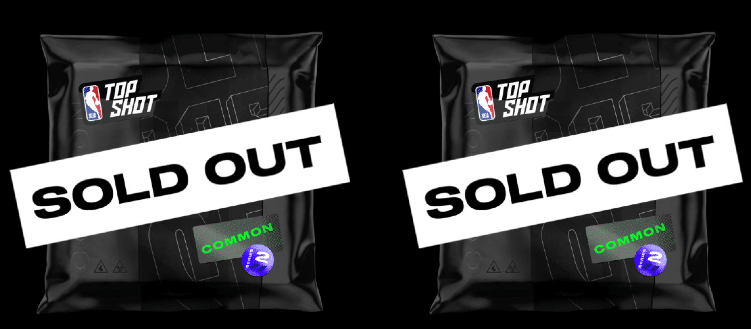[ad_1]
What do you call too many rare things? Something that’s not rare at all.
Like many boys who grew up in the 80s and 90s, I collected baseball cards. My brother and I would pool our allowance and head to the Magik Market convenience store, where you could pick up a pack of cards (complete with a stale stick of gum) for 35 cents. Sometimes we’d get enough money together and convince our parents to take us to Sam’s Club so we could buy a whole box.
I collected for two reasons. First, it was fun. We’d trade cards with other neighborhood kids to collect our favorite players and try to complete the 792-card set. Second, there was money in it. Popular cards like the 1985 Topps Mark McGwire and 1989 Upper Deck Ken Griffey Jr. could turn a cheap pack of cards into big money for a young kid.
We hoped that if we held onto these cards until our kids were born, as kids did in the prior generation, we’d be holding onto the equivalent of a valuable 1952 Topps Mickey Mantle.
We didn’t think much about the actual supply of cards. The Mantle card was valuable, in part, because it was so rare. There weren’t that many cards printed to begin with. And most kids who owned a ’52 Mantle didn’t take good care of it. Maybe they stuck it on their bicycle spokes. Or their parents threw out their collection when they went to college.
We didn’t realize that the baseball card companies were running their printing presses faster than Zimbabwe’s currency office. And kids didn’t throw cards away anymore because they hoped the cards would be valuable one day.
For the most part, kids of the 80s and 90s were disappointed when seeing how much their collections were worth a generation later.
If baseball cards of my generation weren’t scarce and thus valuable, how could card companies introduce that sort of thrill of pulling open a pack with an instant payday? They had to manufacture scarcity.
One way to do this was through card grading. Third-party certifiers would grade the card for quality, with only the best being deemed worthy of being “Gem Mint.” My first e-commerce business took advantage of this; in the early 2000s, I bought boxes of old unopened baseball card packs on eBay and sold the packs individually on my site. The idea was that buyers could hit paydirt if they scored a rookie card of an 80s star that graded Gem Mint.
This was great for the card graders but didn’t do much for the card companies trying to sell brand new packs. So they manufactured scarcity with so-called insert cards. Some cards had autographs. Others had pieces of game-used material. Others were merely numbered. What they had in common is that each insert had a limited print run.
Card manufacturers printed odds on the packaging. Opening a pack of cards had turned into something akin to buying a lottery ticket.
But what happens when all of the manufacturers put out a bunch of rare numbered cards? They are no longer rare.
The price of many game-used relic cards dropped by 90% or more once the market was flooded. Things got so out of control with many different sets and versions of sets released each year that Major League Baseball signed an exclusive deal with Topps in 2009, drastically reducing the number of options (for a while, at least).
The takeaway is that the way you make something that’s brand new a scarce collectible is to deliberately make it scarce, but this deliberate scarcity is a mirage.
This brings us to 2021. Last weekend I bought a pack of three virtual basketball cards at NBA Top Shot for $14. Each of these cards (or “moments”) is numbered, and some are rarer than others. I turned around and sold one of the cards for $189 the same day.
On Sunday, Top Shot launched a new offering of packs for $199. It limited the offering to about 35,000 packs, so not everyone who wanted one got one. Rarity was part of the pitch:
This rare drop comes packing an extra surprise, as collectors will additionally find one Seeing Stars Moment within each pack as well. Yes, every single Rising Stars pack will come with a rare Rising Stars Moment limited to 2,021 and a common Seeing Stars Moment limited to 10,000.
Back of the envelope, these new packs generated about $7 million in revenue within an hour. This means you can expect lots of cards to be minted that are limited to 2,021, 10,000, or whatever.
This means that a card numbered out of 2,021 isn’t all that rare. Sure, there are 2,021 of that card, but there are lots of alternative “rare” cards people can buy. Manufactured scarcity is eventually dwarfed by manufacturing, e.g., printing more cards.
Some of the hoopla around Top Shot is that it’s also a non-fungible token (NFT). People love their crypto, so this is an opportunity to get in on something like bitcoin. And, to be sure, people who got in early have made a lot of money in terms of value in their accounts. I know at least one domainer who has made enough from Top Shot to pay for college for one of his kids. Stories about collections worth millions are making the rounds.
I think we all know where this ends up, though. It will go the way of Beanie Babies.
That’s not to say that you can’t make money with it in the short term. By all means, I’ll continue to buy packs of NBA Top Shot when I can, as long as I can turn around and sell the cards for more than the pack cost.
For my money, acquiring .com domains is still my favorite collectible. Only one of any .com will ever be minted. Sure, a second level domain can be created in another extension, but it’s just not the same. A rare .com has a valuable use, too.
That said, tearing open a pack of sports cards is always a joy, whether it’s ripping open a physical pack or clicking on a virtual one.
Post link: NFTs are the newest manufactured scarcity
© DomainNameWire.com 2021. This is copyrighted content. Domain Name Wire full-text RSS feeds are made available for personal use only, and may not be published on any site without permission. If you see this message on a website, contact editor (at) domainnamewire.com. Latest domain news at DNW.com: Domain Name Wire.
[ad_2]
Source link





